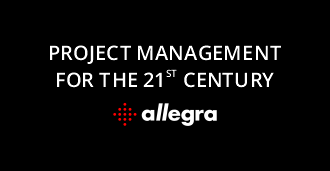Creating SMART Goals
Overview
Success is rooted in high levels of planning and executing those plans as best as possible. But if you take a step back and underpin exactly what it is you are planning and why, you will find it easier to get there! By this we mean setting precise goals, it’s no use being extremely broad when setting goals, the detail is key! This is why making use of SMART objectives whilst setting goals is something we highly recommend.
The SMART goals , also known as the SMART formula or SMART objectives , are a popular method for precisely and accurately defining goals for an organisation. With SMART goals , the desired results are set in a timely, tangible and detailed context so that they can be more easily tracked, understood and achieved by individuals or a team.
This blog is going to illustrate how one can set smart goals, what it entails and shed some light on how useful this way of setting goals can be.
Firstly, lets define smart goals:
The SMART objectives provides for a target formulation based on certain parameters . The term SMART is in fact an acronym, each letter stands for one of these framework conditions. The individual elements are Specific, Measurable , Attainable , Realistic and Timely.
Formulate SMART goals – detailed explanation
1. S – Specific
A goal should always be very specific . This is particularly important because only then is a concrete, clear and unambiguous understanding of the desired result possible. In essence, when describing your goal, make sure not to be too general where possible. For your project planning, this means that your goal should not be “accelerate purchasing” or “improve after sales” but much more detailed, think how?
You can start with a general statement, but you should have specified this sufficiently more precisely using the SMART parameters after the last point at the latest , so that it does not leave any room for interpretation. When someone reads the goal they must really have a sense of direction and lifespan of the goal. The remaining SMART objectives are helpful in this, however being specific is also clearly very important to the actual dimensions of the goal and is very organisation specific.
2. M – Measurable
Your goal should always be measurable. You should therefore state which measurable criteria you are applying upon setting your desired goal. When it comes to “accelerating the purchasing process”, a measurable variable could be, for example, how much faster it should be. An example could be; “accelerate the purchasing process by 2 days from 6 to 4 days”. This way you have introduced measurable parameters. You benefit directly from more clarity in your target formulation as you can strive towards something like this. The measurability of a set goal provides you with a specific benchmark at your side, which you can use as a guide during implementation and in the review.
3. A – Attainable
Your set goal should be accepted and by as many employees as possible as they believe the goal is actually attainable. To do this, it should come out why it is worthwhile to work towards it and to follow the intended path to achieve the goal. In some cases, the letter A in SMART goals is also described as “attractive ”, which emphasizes the importance of noticeable added value to the organisation striving towards the goal. Important questions to consider when creating this element of the goal is, why do we want to pursue this goal in the first place? Is there any added value to achieve this goal? How do we ensure that employees and team members are going to accept this goal?
In the case of the purchasing process, the formulation could therefore be continued as follows: “Accelerate the purchasing process by 2 days from 6 days to 4 days in order to be able to produce and deliver more produce.”
4. R – Realistic
In order for the measurability and acceptance of the goal, it is particularly important that it is realistic to achieve. Increasing weekly sales by 200 percent while working 10 hours less certainly sounds desirable however is it really realistic? It should be checked whether this is also feasible financially and in terms of other resources which it will require. Thus, think carefully about how your desired result can be achieved with the available resources in the organisation and how the goal can be designed based on this.
One possibility for the formulation would be: “To accelerate the purchasing process by 2 days from 6 days to 4 days in order to be able to produce and deliver more produce by 15 percent more .”
5. T – Timeliness
In order to conclude the formulation of your goals, a specific period of time in which you want to achieve the goal is necessary. As with a schedule that might be created in the everyday operations of an organisation, plan enough buffer time in case all measures do not take effect immediately. Orientate yourself for the time periods based on the size of your project: Medium-term optimizations usually take less time than extensive change in an organisation.
Converting existing processes in running an organisation certainly doesn’t happen overnight. So in order to completely change an element of a project to make it very smart, make sure you can create a real timeframe to work within.
For example: “To accelerate the purchasing process by 02/01/2022 by 2 days – from 6 days to 4 days – in order to be able to produce and deliver more produce by 15 percent more.”
There you have it, the elements of a goal which can turn it from ineffective and lousy to really SMART. Below will be a few key examples which SMART objectives have formed a part of and contributed to their success.
3 Examples of the SMART method
1st example: Service in an organisation
Incorrect Goal: Increase customer satisfaction.
Clearly this is not a smart goal, primarily because it is not specific in what it wants to achieve, there is no measure or timeliness to frame this goal within in order for members of the organisation to strive to achieve it.
Correct Goal: We will increase customer satisfaction in our feedback rating system by 10 percent by collecting 30% more feedback by December 31, 2021 and incorporating this into our product going forward.
This is clearly much more achievable as there are SMART objectives fully incorporated into this goal. The use of numerical figures is also a useful way to track and analyse the progress of the smart goal as it unfolds.
2nd example: Sales in an organisation
Incorrect Goal: “Improve sales”
This is clearly incorrect, I mean, where would you even begin for this? How would you know when to stop?
Correct Goal: “We will improve sales by working with three more distributors by March 1st, 2022 to increase the availability of our products by 30 percent.”
Such a smart approach has been taken to this goal!
3rd example: Marketing in an organisation
Incorrect goal: “Increase reach”
Some context for this is vital, remember a goal needs to be accepted by members of the organisation and such a broad goal will vary in meaning significantly is set this way.
Correct Goal: “We will increase the reach of our website by 20 percent with three new pieces of content per week and sharing via social networks- especially Facebook and Instagram.”
The clarity in this goal makes it almost exciting to begin achieving!
SMART project management
As important as it is setting these smart goals, implementing yhem into project planning is as important. In project planning, SMART goals are particularly suitable in the initially project management phases. When one creates a project plan, it is firdtly important to ask the questions “What?” and “Why?”.
Setting an appropriate objective has many advantages : Communication with employees, stakeholders and clients becomes more precise and easier and you can prevent conflicts and misunderstandings in the long and short term. Within the team, a uniform and ideally jointly designed line also strengthens the team structure and in effect the teams overall success.
Aimless projects definitely fail
It is clear to see that projects without clear (and SMART) goals make up the majority of all failed projects. The SMART method is of great help here, because the individual parameters created make ideas and expectations realistic and tangible.
Do you feel inclined to do this now and going forward for goals in your professional and personal life?
Summary: Success with SMART goals
SMART goals are an established and practical method in project management to noticeably simplify your project planning and ensure success. For communication, approval and work – clear goals are necessary for projects to be successful and also economical!
At a glance, SMART goals are essentially; highly specific, accepted, realistic and attainable within an organisation, and measurable and timely. Much success results from this method of working. We would highly recommend It in your project management and planning.
If you’re interested in reading more blogs on project management check out the blogs below!
What is the Magic Triangle in Project Management
What every Project Manager should know about dependencies




